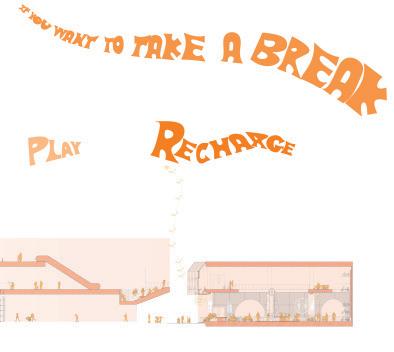
2 minute read
PUBLIC [SHOPPING] DOMAIN

Cornell University AAP
Advertisement
B.Arch Thesis
May 2022
Advisors: Jesse LeCavalier Erin Pellegrino

A genealogy of Shenzhen’s shopping venues: (from top to bottom)



I. Introduction
A personal reflection on public space and shopping mall in the city of Shenzhen
In 1588, Pope Sixtus V commissioned Antonio Bordino a map of Rome fabricated by monuments and processional routes. The map brought new Christian architecture in parallel with the antique ruins, promoting these locations as major public spaces. 400 years later, on the other end of Eurasia, Christianity did not find its place on the map of Shenzhen, but consumerism did - with more than 200 million square meters under construction annually, shopping malls are having a substantial presence in the public domain of the city.
As neoliberalism becomes China’s urbanization agenda, the rise of shopping malls has a direct relationship with economic growth and the increasing marketization of urban land, which is also the symbol for the urbanization desired by the government. Even though the change in distribution chain and the booming e-commerce are threatening some traditional malls, shopping did not wane but seek out innovative ways to further engrave its presence in the city - Whether it be redeveloping urban villages into shopping streets, building malls like parks, or building parks in malls. How would the urban fabric respond to such omnichannel retail, and feeding back to the supply chain construction on the broader scale? As shopping spaces become more interconnected, they create an insulated landscape of fulfillment. Given their dominance and omnipresence, do malls begin to define the city’s public culture? More importantly, given the past two decades of shopping mall apocalypse across western societies, how will Shenzhen look in 10, 20, or 50 year as it repeats the pattern - What is the alternative future to these “contemporary ruins”?
The Malls in China

In a sense, malls were born to be serving the public by taking precedents in agoras of Ancient Greek cities as the center of civic life. The modern enclosed malls that we are familiar with nowadays were first envisioned by Victor Gruen in the post-war era in the US, echoing the booming of suburban and automobile culture. Malls in China, however, appeared alongside the opening up of the economy and the middle-class pursuit of convenient shopping and entertainment venues as part of China’s neoliberal agenda.
The Chinese malls have undergone massive transformation since the booming of E-commerce and are further impacted by the COVID pandemic. Given the changes in supply chains, malls are no longer simply the place for exchange but increasingly a venue for activities - social or economical. The act of shopping for goods, on the other hand, has been encouraged contactless and online backed by streaming and an omnipotent delivery system: Streamers will walk around the stores, use the products, wear the clothes - for you, and all you need to do is click on the phone and have drinks and produce delivered to you within 30 minutes of your order, and clothes, furniture and luxuries delivered in around three days.
Going to malls in person is then less related to the question of “for what” but “with whom”: Being a physical venue with a collection of diverse sensual experiences, shopping malls may be these “museums” where families and friends walk around for a whole afternoon. They may become what Victor Gruen initially envisioned - the center for community life supported by high-density development, mass-transit, and underground services.
The Public Space in Shenzhen
The investigation of shopping malls on their social functions is particularly important in the context of Shenzhen. As a city built for the capitalist experiment in the 80s, Shenzhen’s urban history and construction are tied to market logic - from the renowned Huaqiang North electronic market to the now largest under-construction shopping malls. Unlike other major cities in China, there is little precapitalism context to resist the malls from taking over public space.
From a more personal perspective, most of my memories relating to weekends are associated with malls. The “publicness”, well-maintained and luxurious environment, and accessibility promised by public transportation grant its public popularity and endurance - shopping malls have become an inevitable destination on weekends, even if no shopping actually happens. The memories associated with malls also extend way beyond shopping.


